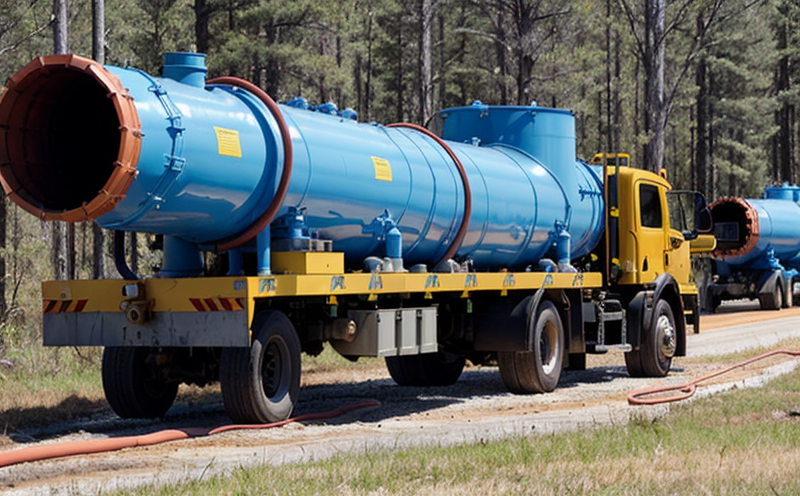ISO 13623 Pipeline Transportation System Safety Testing
The International Organization for Standardization (ISO) standard ISO 13623 defines a series of methodologies and procedures aimed at ensuring the safe transportation of natural gas through pipeline systems. This testing protocol is crucial for maintaining the integrity and reliability of pipelines, which are vital infrastructure components in the power and utilities sector.
The primary objective of this test is to identify potential weaknesses or risks that could lead to leaks, explosions, or other hazards associated with natural gas distribution networks. By adhering to ISO 13623 guidelines, laboratories ensure compliance with international safety standards, thereby protecting both the public and personnel working in close proximity to these systems.
The testing process involves several key steps:
- Identification of high-risk areas within the pipeline network
- Application of non-destructive testing techniques such as ultrasonic examination, radiography, and eddy current inspection
- Evaluation of material properties using destructive tests like tensile strength measurement and fracture toughness assessment
The results from these evaluations provide critical insights into the overall condition of the pipeline system. Engineers and quality managers can use this information to prioritize maintenance activities, schedule repairs, or implement necessary upgrades before issues escalate into larger problems.
By leveraging ISO 13623 compliance, organizations demonstrate their commitment to operational excellence and regulatory adherence. This not only enhances stakeholder confidence but also helps mitigate risks associated with non-compliance penalties or accidents caused by negligence.
International Acceptance and Recognition
The widespread adoption of ISO 13623 reflects its significance in promoting best practices for pipeline safety. This standard is recognized by regulatory bodies worldwide, including major international organizations such as the American Society for Testing and Materials (ASTM), European Committee for Standardization (CEN), International Electrotechnical Commission (IEC), and others.
Organizations operating in countries that mandate compliance with ISO standards can benefit from this acceptance. It allows them to meet local regulations while ensuring consistency across borders, which is particularly beneficial for multinational corporations involved in cross-border natural gas projects.
Environmental and Sustainability Contributions
The safe transportation of natural gas plays a crucial role in reducing reliance on fossil fuels and promoting cleaner energy solutions. By minimizing the risk of leaks or other failures, ISO 13623 helps maintain an efficient and sustainable pipeline network. This contributes to broader environmental goals by preventing emissions from escaping into the atmosphere.
Moreover, regular testing according to this standard supports long-term sustainability initiatives by ensuring that pipelines remain operational for extended periods without compromising safety standards. This extends the lifespan of infrastructure assets, reducing the need for premature replacements and associated resource consumption.
Why Choose This Test
- Promotes compliance with global safety standards for natural gas transportation systems
- Ensures reliable and safe operation of pipeline networks, reducing the risk of accidents or failures
- Provides detailed insights into the structural integrity of pipelines through rigorous testing methods
- Safeguards public health by eliminating potential hazards from the natural gas distribution network





